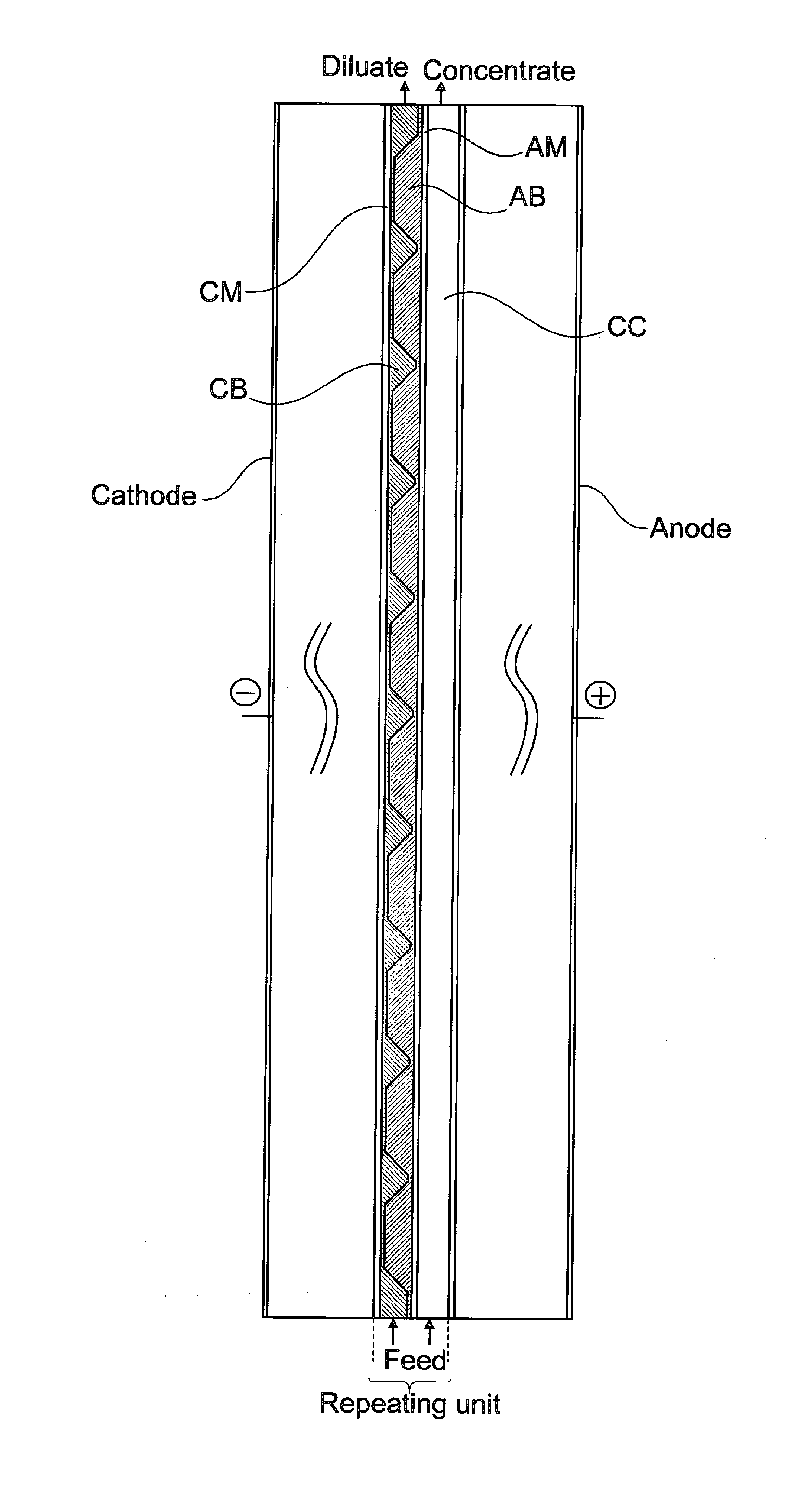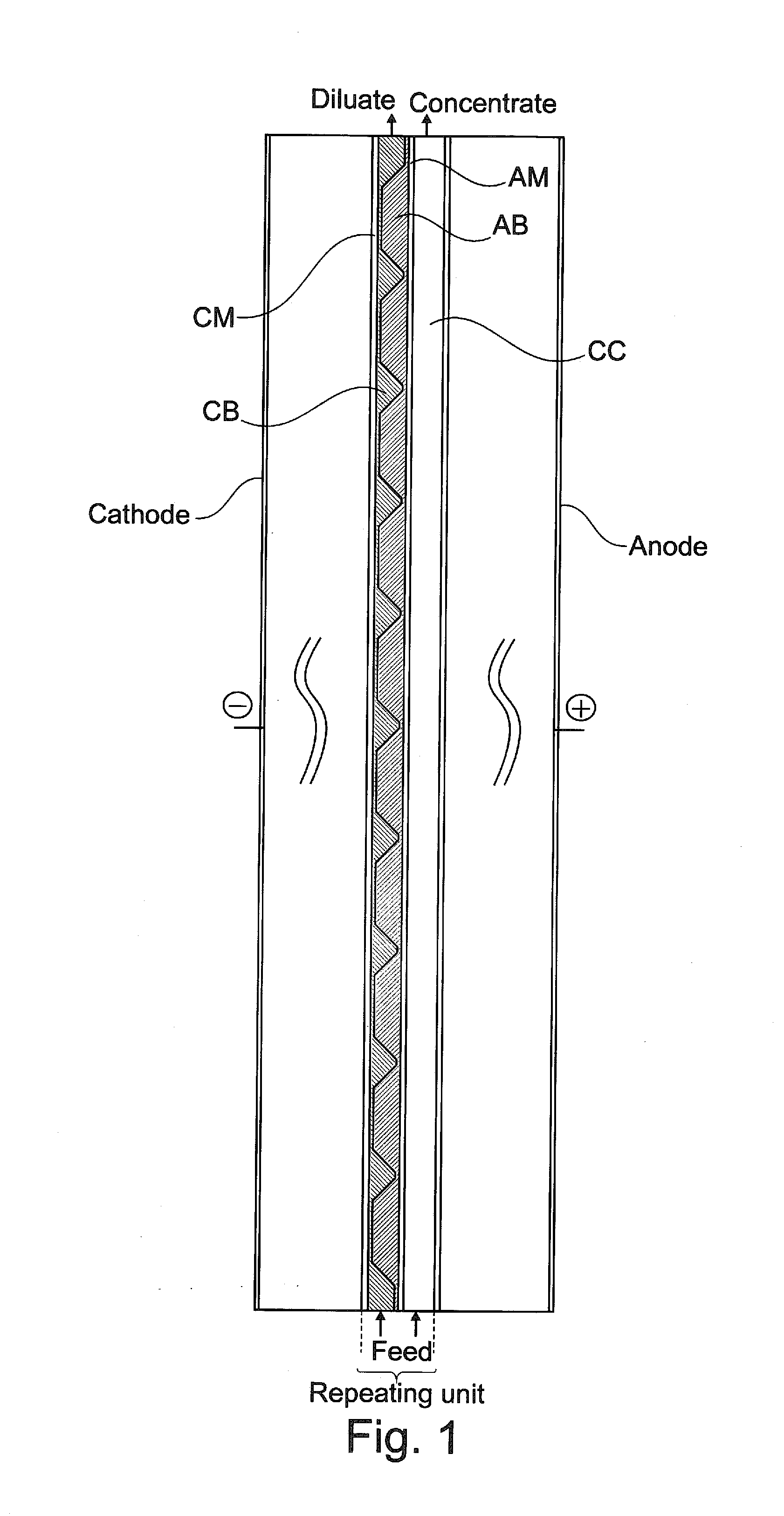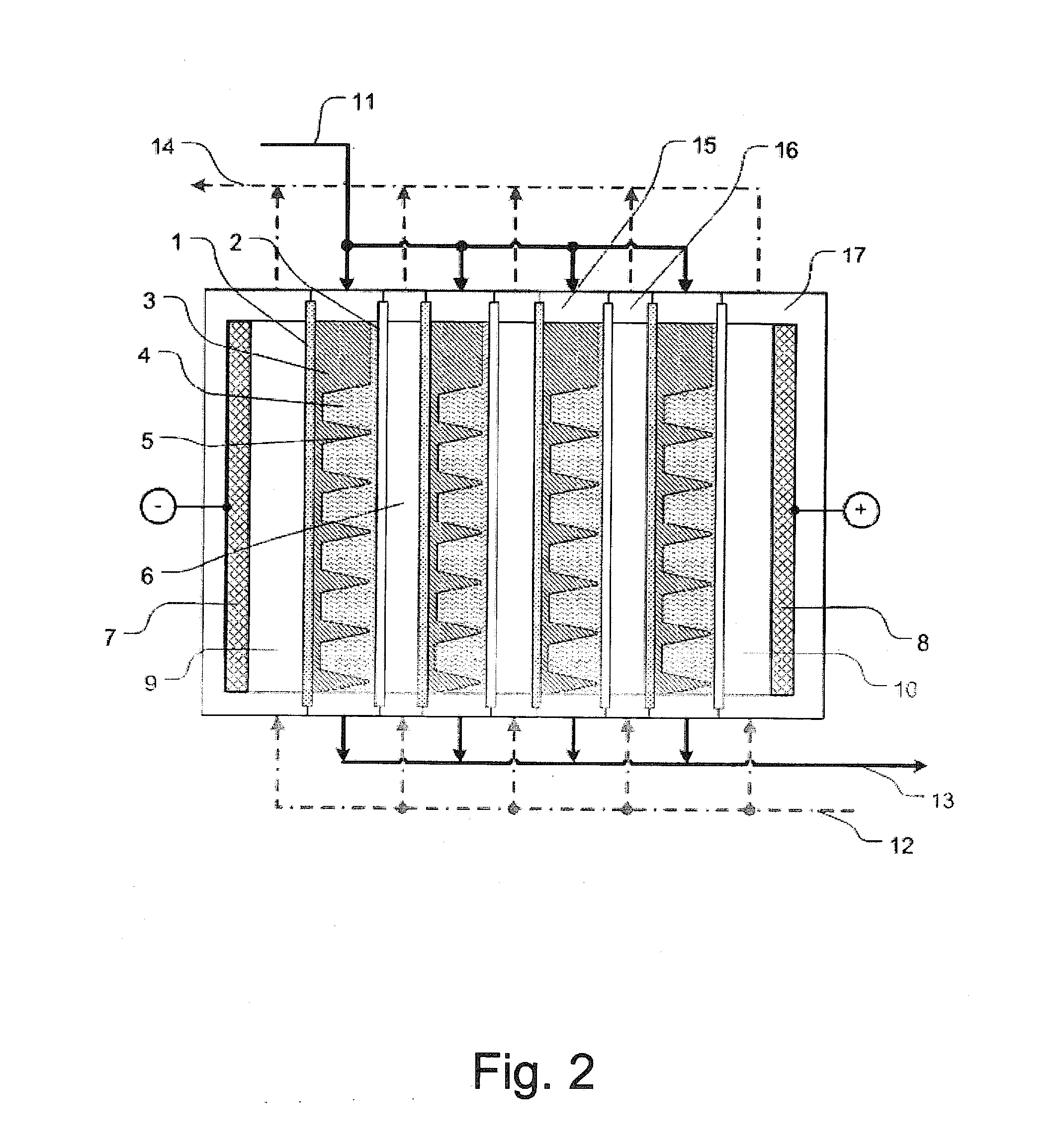Electrodeionization module and apparatus
a technology of electrodeionization module and electrodeionization process, which is applied in the direction of liquid/fluent solid measurement, fluid pressure measurement, peptide, etc., can solve the problems of low energy efficiency of the deionization process, high material cost, and available for exchange, and achieve the effect of reducing current efficiency
- Summary
- Abstract
- Description
- Claims
- Application Information
AI Technical Summary
Benefits of technology
Problems solved by technology
Method used
Image
Examples
first embodiment
[0115]In the laboratory water purification system according to the present invention, water after pretreatment and reverse osmosis (RO) purification is collected in a tank.
[0116]The EDI module or the EDI apparatus according to the present invention (in the following also simply called EDI module) is located downstream the tank and can be operated in two modes:
[0117]1) regeneration—recirculation of water between the tank and the EDI module while water in the tank is purified to a set level and the ion-exchange materials of the module are transformed in substantially regenerated form;
[0118]2) dispensing—water from the tank is pumped through the EDI module and produced pure or ultrapure water is used at flow rate of dispensing.
[0119]Preferably, the RO-permeate enters the tank from the top, while an increase of interface water / air, e.g. using spray ball or aerator, will intensify the release of CO2 from water oversaturated with CO2. Such partial degassing would facilitate the work of th...
second embodiment
[0124]In the laboratory water purification system according to the present invention, the water purification system comprises mainly pretreatment, RO or NF (nanofiltration) and the EDI modules according to the present invention without any intermediate water storage tank for the EDI diluate.
[0125]The water produced by this system can be directly supplied to the point of use with only an optional purifier downstream the EDI module. This laboratory water purification system is advantageous to currently known systems, since it requires less components.
[0126]An example of this embodiment is schematically illustrated in FIG. 9. Here a part of the laboratory water purification system utilizing an EDI module according to the present invention is shown where the RO and EDI purification steps are designed to deliver water to the point of use with sufficient flow rate without an intermediate storage reservoir.
third embodiment
[0127]In the laboratory water purification system according to the present invention, the laboratory water purification system contains an EDI module according to the present invention and comprises an RO-step upstream the EDI module, wherein by switching from a production to a stand-by mode a part of the water produced by EDI or by RO is diverted to the inlet of the RO to perform an RO-flush.
[0128]During a stand-by period, an exchange of ions between the permeate and the reject side of an RO-membrane occurs, which leads to a contamination of the permeate side when tap water or water with a high ionic load is used as feed. Conventionally, a certain rinsing time (typically from some seconds to few minutes) is required to rinse out the thus contaminated water from the permeate side and then divert the permeate of a sufficient low conductivity for downstream EDI-purification. In order to avoid this rinsing and to start the production once required the laboratory water purification syst...
PUM
| Property | Measurement | Unit |
|---|---|---|
| length | aaaaa | aaaaa |
| angle | aaaaa | aaaaa |
| angle | aaaaa | aaaaa |
Abstract
Description
Claims
Application Information
 Login to View More
Login to View More - R&D
- Intellectual Property
- Life Sciences
- Materials
- Tech Scout
- Unparalleled Data Quality
- Higher Quality Content
- 60% Fewer Hallucinations
Browse by: Latest US Patents, China's latest patents, Technical Efficacy Thesaurus, Application Domain, Technology Topic, Popular Technical Reports.
© 2025 PatSnap. All rights reserved.Legal|Privacy policy|Modern Slavery Act Transparency Statement|Sitemap|About US| Contact US: help@patsnap.com



